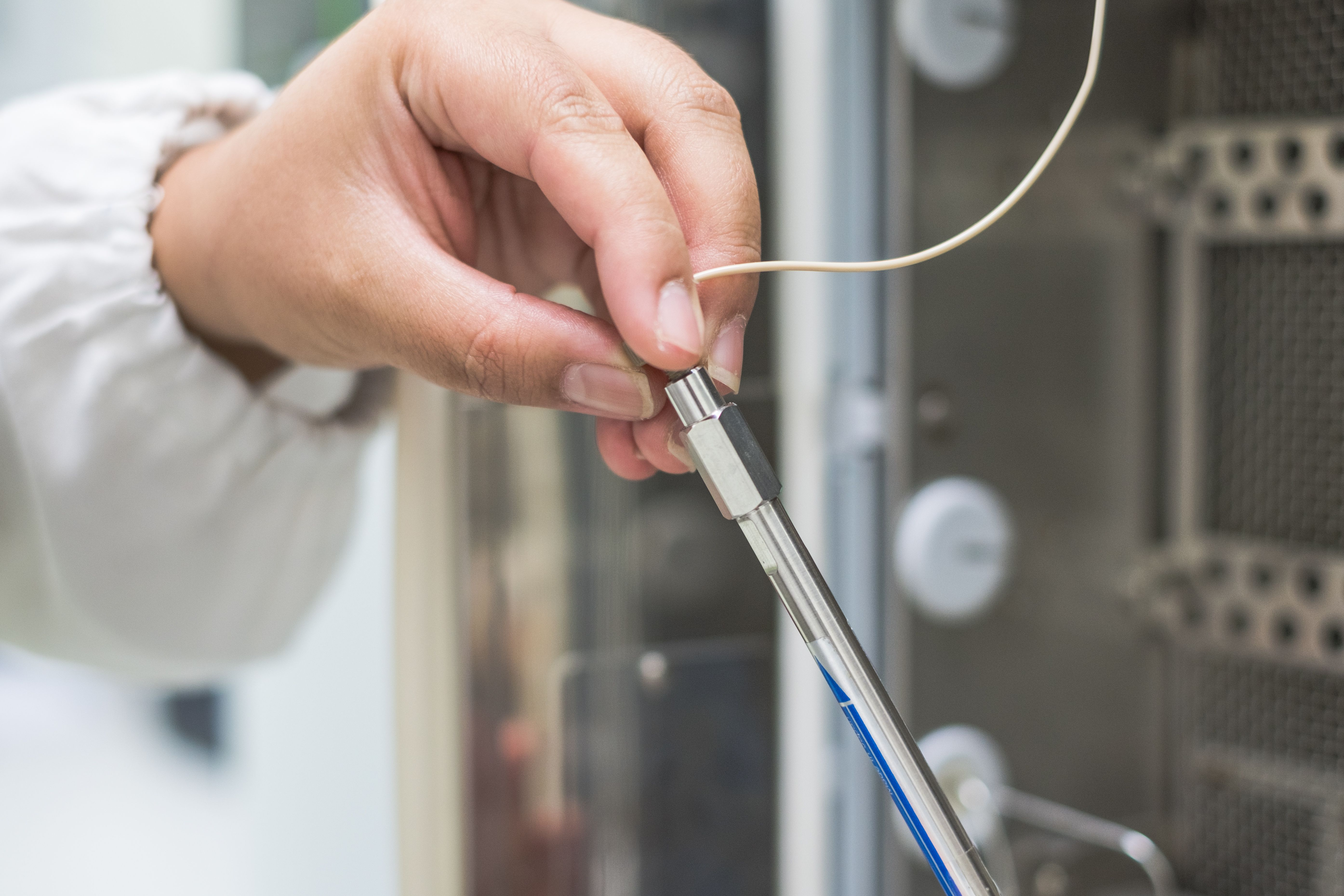HPLC After 50 Years: How It’s Evolved and What’s Next
At EAS 2023, Michael Dong and Szabolcs Fekete reviewed certain innovations in high performance liquid chromatography (HPLC), and in what ways scientists can continue to improve the quality of their experiments.
Saying his career has paralleled the rise of high performance liquid chromatography (HPLC) since first taking courses on the topic in the early 1970s, Michael Dong, principal consultant of MWD Consulting in Norwalk, Connecticut, USA discussed select developments in the technique and its columns in a lecture at the Eastern Analytical Symposium & Exposition 2023 (EAS) on Tuesday, November 14 in Plainsboro, New Jersey, USA.
Analyst is working in laboratory with connecting HPLC column to the HPLC system before install to column oven, concept of qc laboratory in pharmaceutical industry . | Image Credit: © Sukjai Photo - stock.adobe.com

As the title of his talk, “Innovations in HPLC Columns: Perspectives from a Pharmaceutical Scientist,” would indicate, Dong’s history in pharmaceuticals has given him a unique view to the evolution of HPLC—particularly its interconnectivity with his longtime line of work, which he noted with a mix of gravitas and humor.
“If one day HPLC is gone, the drug industry would just come to a halt,” Dong said.
Dong took several moments to recognize the scientists who spearheaded key advancements in each of four areas: reversed-phase liquid chromatography (RPLC) that assists assay reproducibility, using high-purity silica to reduce peak tailing and batch-to-batch column reproducibility, superficially porous particles (SPP) that increase column efficiency, and hybrids (including charged surface) that enhance pH range.
Of course, as Dong pointed out, all of these are specifications within one particular technique—which can sometimes complicate things.
“It would be nice if you had one method that worked for everything in the world,” he said.
Following Dong, and making it a point to say he was not going to talk about HPLC history, Szabolcs Fekete of Waters Corporation in Geneva, Switzerland gave a lecture on “Innovations in HPLC Column Technology for Faster and More Efficient Separations of Large Biomolecules.”
In Fekete’s talk, it was the length of the chromatographic column, rather than its various compositions, that was the focus. For macromolecule analysis, he said, because only a very short inlet segment retains large solutes effectively, columns of perhaps only a few centimeters, or shorter, can be appropriate.
Depending on what is being analyzed, then, an “effective column length” can be determined, and not one size fits all.
References
(1) Dong, M. Innovations in HPLC Columns: Perspectives from a Pharmaceutical Scientist. Presented at the Eastern Analytical Symposium & Exposition 2023, Plainsboro, New Jersey, November 14, 2023.
(2) Fekete, S. Innovations in HPLC Column Technology for Faster and More Efficient Separations of Large Biomolecules. Presented at the Eastern Analytical Symposium & Exposition 2023, Plainsboro, New Jersey, November 14, 2023.
Investigating 3D-Printable Stationary Phases in Liquid Chromatography
May 7th 20253D printing technology has potential in chromatography, but a major challenge is developing materials with both high porosity and robust mechanical properties. Recently, scientists compared the separation performances of eight different 3D printable stationary phases.
Characterizing Polyamides Using Reversed-Phase Liquid Chromatography
May 5th 2025Polyamides can be difficult to characterize, despite their use in various aspects of everyday life. Vrije Universiteit Amsterdam researchers hoped to address this using a reversed-phase liquid chromatography (RPLC)-based approach.
New Method Explored for the Detection of CECs in Crops Irrigated with Contaminated Water
April 30th 2025This new study presents a validated QuEChERS–LC-MS/MS method for detecting eight persistent, mobile, and toxic substances in escarole, tomatoes, and tomato leaves irrigated with contaminated water.

.png&w=3840&q=75)

.png&w=3840&q=75)



.png&w=3840&q=75)



.png&w=3840&q=75)


